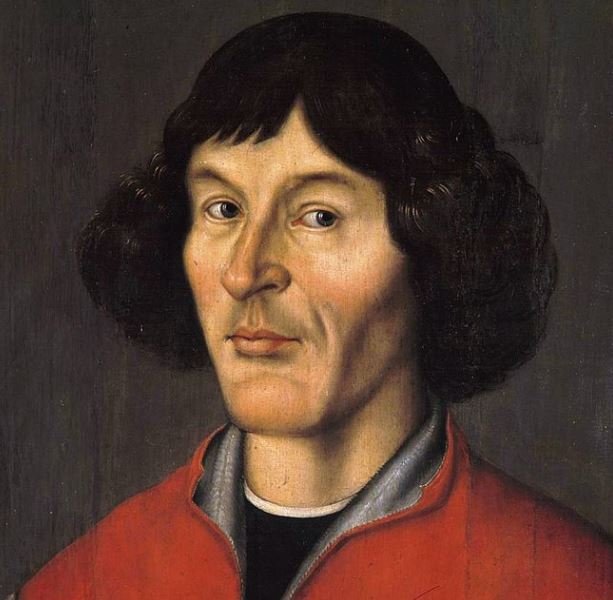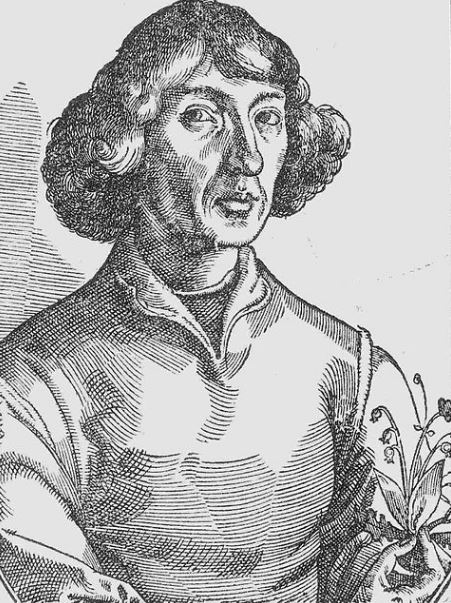Known as the father of modern astronomy, Nicolaus Copernicus was a Polish Astronomer, Mathematician, and Catholic Canon. He is famous for his Heliocentric Theory of the Universe, which states that the Sun is near or at a central point (of the solar system or universe) and earth and other bodies revolve around it.
In all likelihood, Copernicus developed his model independently of the famous Greek astronomer, Aristarchus of Samos, who had formulated such a model some eighteen centuries earlier. Let’s dig deep into the life and accomplishments of Nicolaus Copernicus, one of the greatest astronomers.
1. Early Life of Nicolaus Copernicus
Nicolaus Copernicus was born in 1473 in Torun, a city in north-central Poland on the Vistula River. Hia family was among the top merchants of that time. When his father died, Copernicus’s uncle, soon to be a Bishop, undertook the boy.
Copernicus was provided the best education of the day and bred for a career in Canon Law. He studied liberal arts, including Astrology and Astronomy at the University of Krakow. After that, like many other people of his social class, Copernicus was sent to Italy to study law and medicine.
2. Copernicus Examined the Intricacies of Astrology
When Copernicus was studying at the University of Bologna, he lived temporarily in the home of Domenico Maria de Novara, the principal astronomer at the university. At that time, Astronomy and Astrology were closely related and regarded equally. Novara was responsible for issuing the astrological prognostications (an indication in advance) for Bologna. Sometimes, Copernicus assisted him in the process and Novara exposed him to the criticism of astrology and aspects of the Ptolemaic system, which placed Earth at the center of the universe.
Copernicus also studied at the University of Padua. In 1530, he received a doctorate in Canon Law from the University of Ferrara. After that, he returned to Poland and became a doctor and church administrator. During his free time, Copernicus used to get involved in several scholarly pursuits, including astronomical work. By 1514, Copernicus was a renowned astronomer in the town and most church leaders consulted him to reform the Julian calendar.
Read more about another capable man of history: Napoleon Bonaparte.
3. Nicolaus Copernicus Against the Ptolemaic System
According to the cosmology of the early 16th century, Earth sat in a static position, at the center of several rotating, concentric spheres that support the celestial/astronomical bodies: the moon, the sun, the known planets, and the stars.
From ancient times, philosophers believed that the heavens were arranged in circles. This confused the astronomers, who often recorded the eccentric motion of the planets. According to them, sometimes the planets suddenly stop in their orbit of Earth and move retrograde across the sky.
Observation of Epicycles
In the second century A.D., the Alexandrian astronomer and geographer, Ptolemy, tried to resolve this problem by arguing that the planets, sun, and moon move in small circles around the much larger circles that revolve around the Earth. He called these small circles epicycles, incorporated numerous epicycles rotating at varying speeds, and made his celestial system correspond with most astronomical observations on record.
For more than 1000 years, The Ptolemaic System of Cosmology was accepted in Europe. However, Copernicus presented some of his astronomical evidence, proving some Ptolemaic theories unreliable and confusing. Astronomers were not agreeing on the order of the planets from Earth and this was the problem that consumed Copernicus for a very long time. He addressed this issue at the beginning of the 16th century.
4. Nicolaus Copernicus and the Heliocentric Theory
Between 1508 and 1514, Nicolaus Copernicus wrote a short astronomical treatise (a written work dealing systematically with a subject) called “Little Commentary,” which laid the basis for his renowned heliocentric (sun-centered) system. In the treatise, he explained the order of the known planets, including Earth, from the sun, and estimated their orbital periods relatively. However, this treatise was not published in his life.
The Heliocentric theory was by no means a turning point for Copernicus because it gave rise to as many problems as it solved. For example, it was always assumed that heavy objects are supposed to fall on the ground because the Earth is the center of the universe, but why would they do so in a sun-centered system?
Copernicus adhered to the ancient belief that circles governed the heavens, but his evidence showed the opposite, showing that even in a sun-centered universe the stars and planets did not revolve around the sun in circular orbits.
Because of these never-ending problems and self-contradictory evidence, Copernicus delayed the publication of his major astronomical work, De revolutionibus orbium coelestium libri vi, or Six Books Concerning the Revolutions of the Heavenly Orbs, all his life. It was completed around 1530 and wasn’t published until 1543, the year of Copernicus’s death.
In case you’re a history lover, read our article about some of the greatest self-made men in American history.
5. Discoveries of Nicolaus Copernicus
Mostly, the discoveries of Nicolaus Copernicus were contradicted by many fellow astronomers. In “Six Books Concerning the Revolutions of the Heavenly Orbs,” Copernicus’ argument that planets and Earth revolve around the sun helped him make many other major astronomical discoveries.
He argued that Earth, while revolving around the sun, spins on its axis daily. Earth takes one year circle around the sun and during this time, gradually wobbles on its axis, which explains the precession of the equinoxes (the time or date, twice each year, at which the sun crosses the celestial equator, when day and night are of approximately equal length).
Some Flaws in Copernicus’ Work
Copemricus’ work had some of these major flaws.
- The major flaw in his work was explaining the sun as the center of the whole universe and not just the solar system.
- Copernicus failed to grasp the reality of elliptical orbits and that’s why he incorporated numerous epicycles into his system, the way Ptolemy did.
- Even without the concept of gravity, planets, and earth still revolved around the sun on giant transparent spheres.
Copernicus and De revolutionibus
While writing one of his extremely dense scientific works, De revolutionibus, Copernicus noted that “mathematics is written for mathematicians.” If the work were more accessible, many people would have objected to its non-biblical and heretical (believing in or practicing religious heresy) concept of the universe. Most astronomers didn’t know about the De revolutionibus, and Copernicus’ Heliocentric basis was rejected by most sophisticated astronomers.
6. Other Accomplishments of Nicolaus Copernicus
Let’s have a look at other notable accomplishments of Nicolaus Copernicus.
Copernicus Formulated the Quantity Theory Of Money
Nicolaus Copernicus was also a renowned figure in the world of Economics and is famous for his Quantity Theory of Money (QTM), which he derived in 1517. He arrived at the theory without the stimulus of an inflationary influx. The theory states that the money supply is in a direct and proportional relationship with the price level. Resultantly, increased circulation of money will cause a proportional increase in the prices of goods.
In the 1989s, QTM was very popular and was used by major economies including Great Britain under Margaret Thatcher and U.S. under Ronald Reagan. It remains a principal concept in economics.
Quantity Theory of Money Formula
M*V = P*T
Where,
M = Money supply
V = Velocity of money
P = General price of goods
T = All transactions
Copernicus Achieved Expertise in a Wide Variety of Fields
Being a polymath, he worked in many fields, i.e. as a Catholic cleric, Mathematician, Physician, classical scholar, translator, governor, jurist, diplomat, and economist. He actively participated in the economic and political life of Royal Prussia. He prepared maps for the royal council congress including that of Warmia (a historical region in northern Poland); and the Kingdom of Poland and Lithuania. With a keen interest in art, Copernicus also painted a self-portrait.
He Independently Arrived at the Gresham’s Law
King Sigismund I of Poland asked Copernicus to work for monetary reforms. As a result, in 1522, Copernicus delivered the paper Monetae Cudendae Ratio (On the Minting of Coin) to the Royal Prussian Assembly, which was published in 1526.
This paper contains what is now known as Gresham’s law. At first, it was introduced by Nicole Oresme (French philosopher) and is named after Thomas Gresham (an English merchant and financier) who arrived at it around a century after Copernicus.
Gresham’s law states that “bad money drives out good”. Unlike good money, the actual value of bad money is considerably lower than its face value. This law, proven to be right, states that it is impossible to circulate both good and bad coins together, as the good coin is hoarded and exported while the degraded coin remains alone in circulation.
Take a look at the splendid accomplishments of Charles Darwin.
7. Departure and Legacy of the Father of Modern Astronomy
Nicolaus Copernicus breathed his last on May 24, 1543, in what is now Frombork, Poland. He died the same year his major work was published, which saved him from the outrage of religious leaders who condemned his heliocentric view of the universe as heresy.
However, in the 17th century, Johannes Kepler (German astronomer) and Galileo (Italian astronomer) developed and popularized the Copernican theory, which also made Galileo end up with a trial and conviction for heresy. In the late 17th century, while following Isaac Newton’s work in celestial mechanics, non-Catholic countries rapidly started accepting the Copernican theory. By the late 18th century, the Copernican view of the solar system was almost universally accepted.


